Bicolor Ragdoll
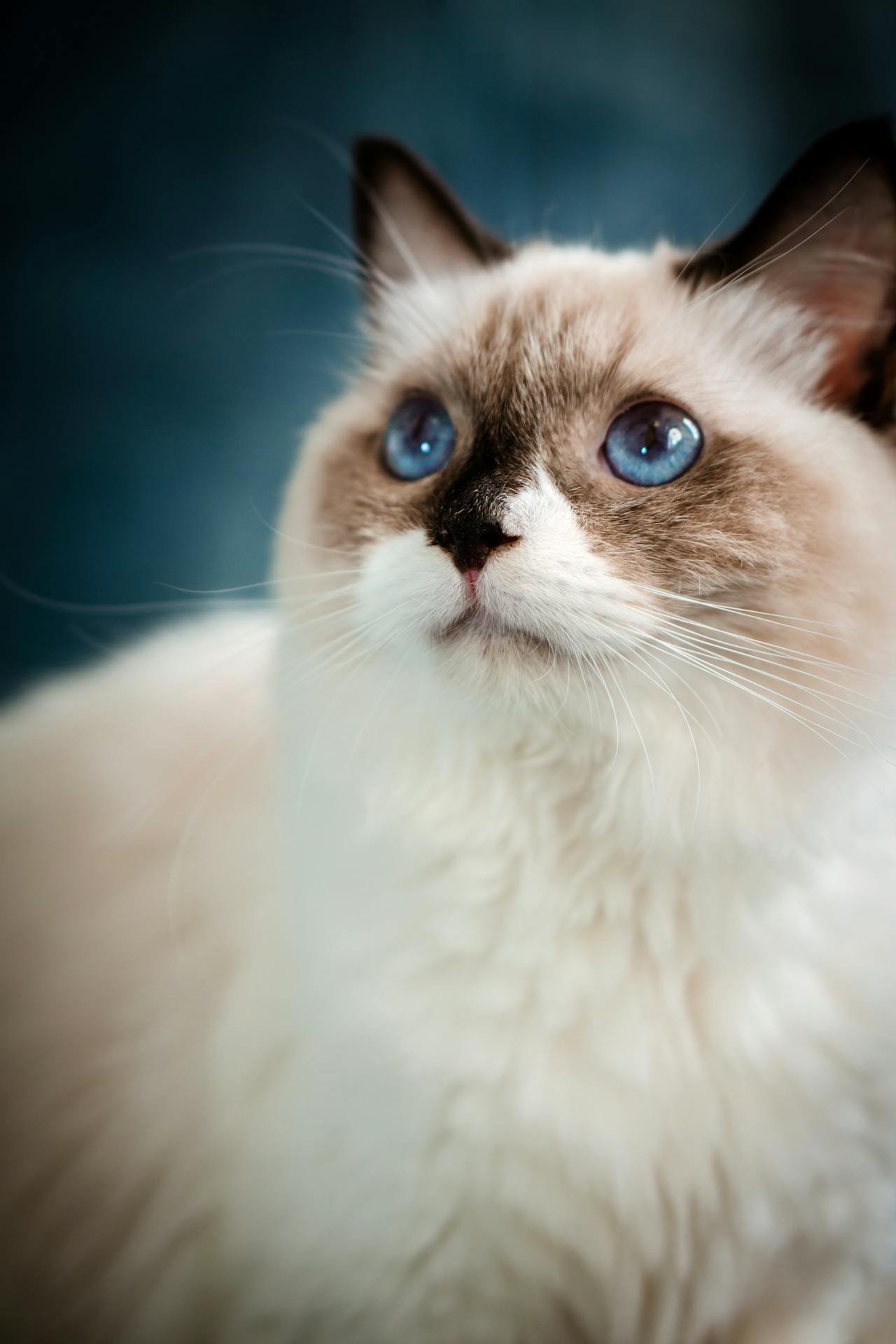
As ragdoll cats grow, their pointed ears, faces, paws, and tails show more defined colours. Their patterns become more apparent three months after birth, and full-colour development occurs within two or three years. At first, ragdoll colours and patterns may seem confusing, but they’re pretty straightforward once you get the hang of them. Ragdolls come in many colours and patterns. Some have stripes, some have spots, and some are solid-coloured. Knowing ragdoll patterns and colours can help you identify them quickly. For example, the pointed pattern features a light body with darker extremities such as the ears, paws, and tail. Bicolor ragdoll cats have a white inverted ‘V’ on their faces, while mitten ragdolls have white paws that resemble mittens.
Lynax pattern Vs Bicolor ragdoll
The lynx pattern in ragdolls features distinct tabby-like markings, with stripes that can be seen on the face, legs, and tail. The lynx pattern can overlay any recognized ragdoll colors, adding a layer of uniqueness to their appearance. On the other hand, bicolor ragdolls feature a more uniform and symmetrical appearance with distinct markings such as a white inverted ‘V’ on the face and white on the legs and belly.
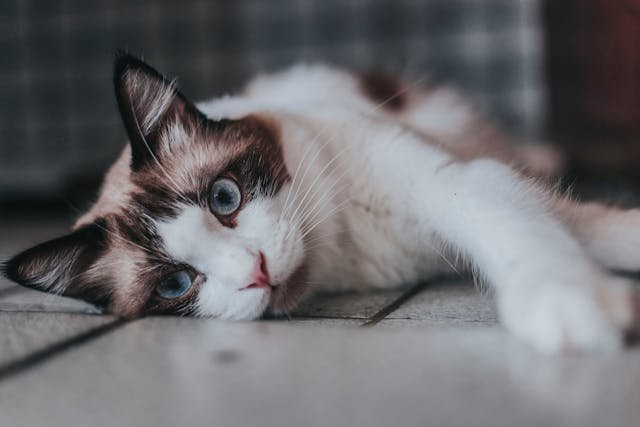
Bicolor Ragdoll
Lynx Pattern Ragdoll
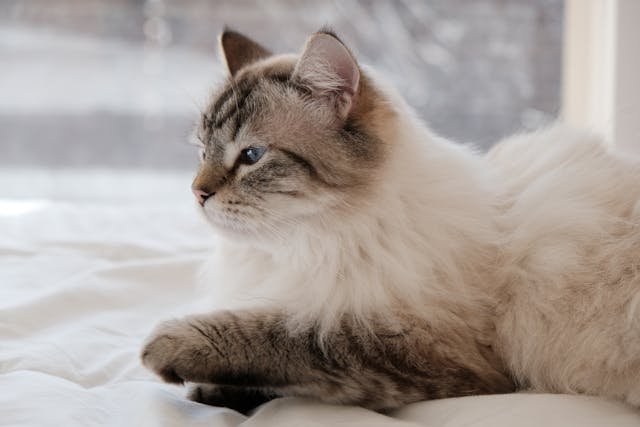
Bicolor Ragdoll Vs Pointed Ragdoll.
The pointed pattern highlights a stark contrast between the light body and the darker extremities, making the ears, paws, and tail stand out. In contrast, the bicolour pattern is characterized by a more balanced distribution of white, especially the distinctive inverted ‘V’ on the face, which gives them a unique and charming appearance. Understanding these differences can greatly assist in identifying and appreciating the specific traits of each ragdoll.
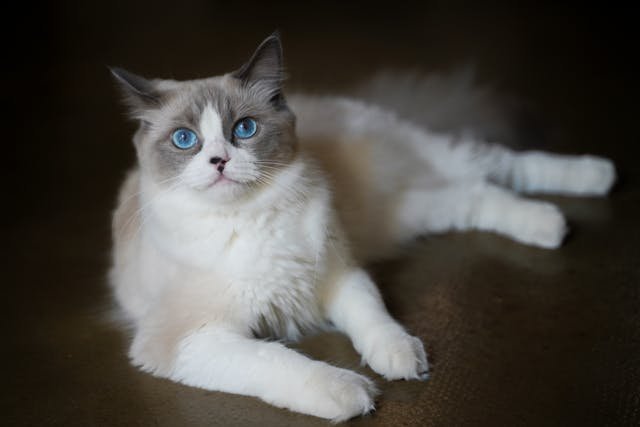
Bicolor Ragdoll’s availability
- Seal bicolor
- Blu bicolor
- Chocolate bicolor
- Lilac bicolor
- Red bicolor
- Cream bicolor

Seal Bicolor Ragdoll
Blue Bicolor Ragdoll


Chocolate Bicolor Ragdoll
Lilac Bicolor Ragdoll
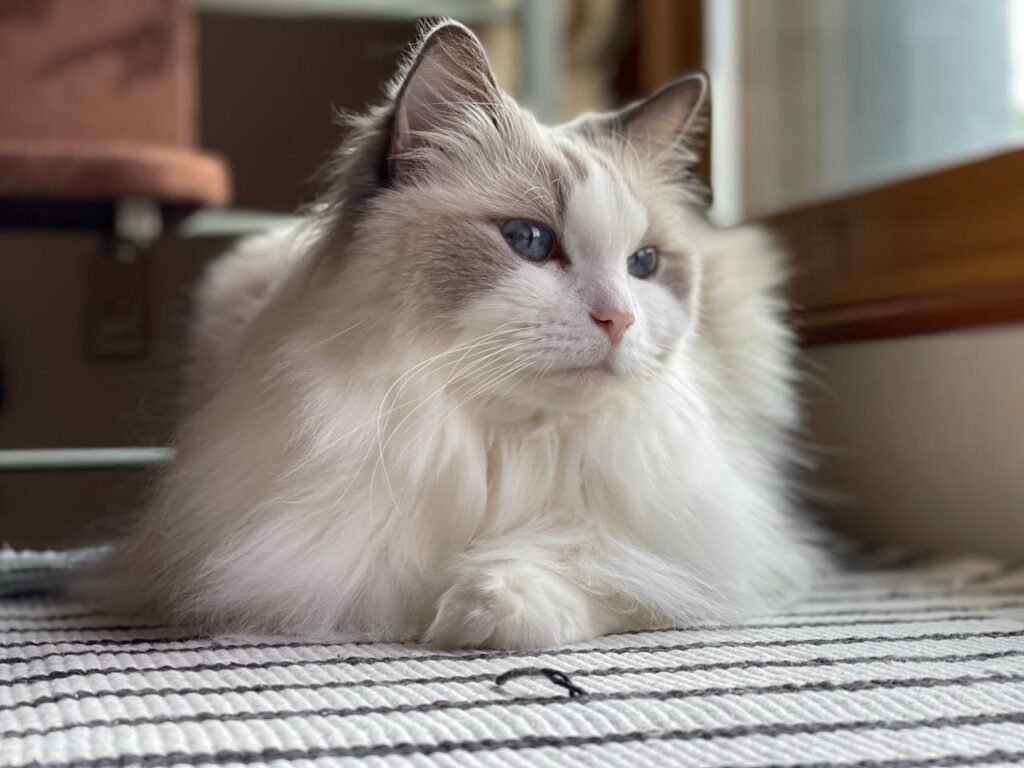
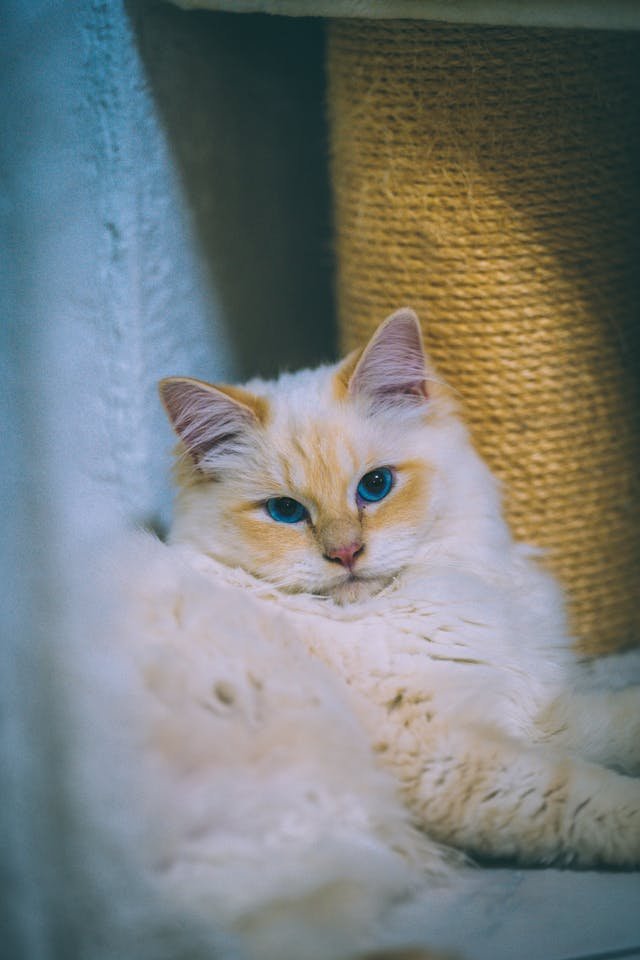
Red Bicolor Ragdoll
Cream Bicolor Ragdoll
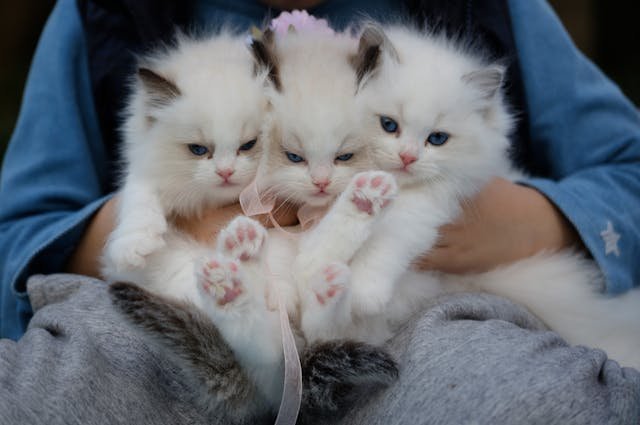
How to tell the difference between a Spotted and a Striped Ragdoll
Striped ragdolls, or tabby or lynx ragdolls, have distinct lines running across their face, legs, and tail, creating a striped appearance. Spotted ragdolls, on the other hand, have round or oval spots scattered across their bodies, giving them a more dotted look. Observing the distribution and shape of these markings can help you easily tell the difference between the two patterns. Breeders and enthusiasts must recognize these patterns to ensure cats meet specific breed standards. It also helps identify potential health issues linked to certain colour variations. Understanding these patterns can also enhance appreciation and care for these beautiful cats.
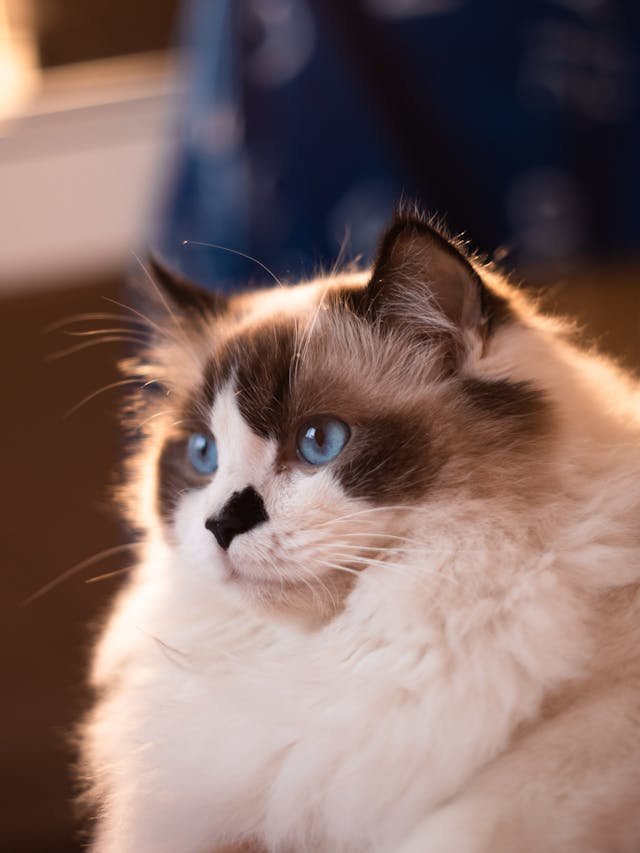
Spotted Ragdoll
Striped Ragdoll
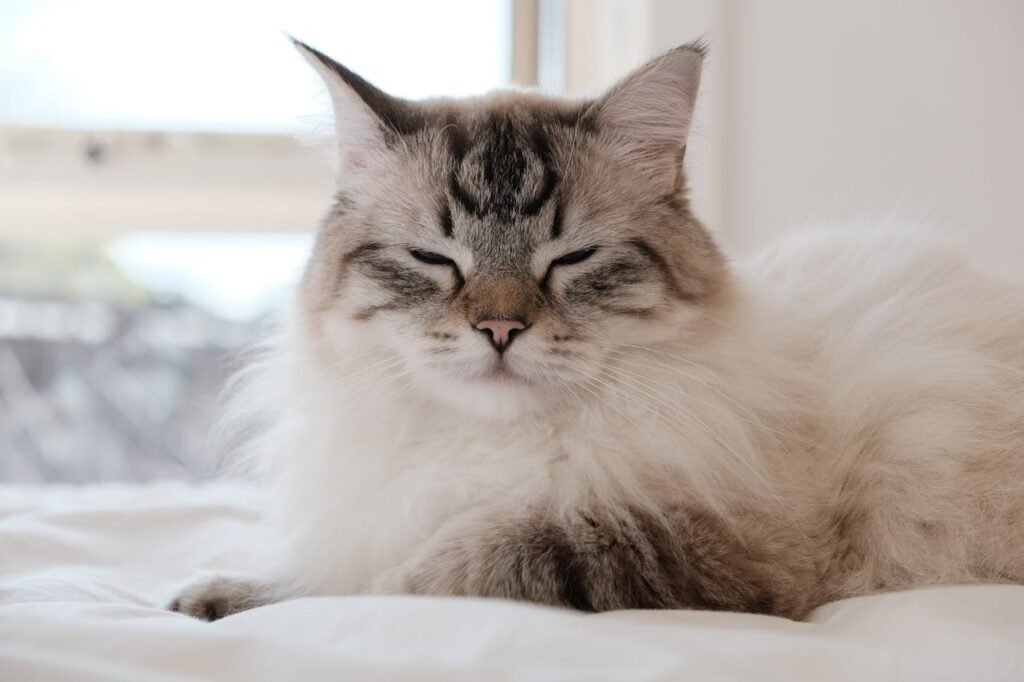
In many cases, Patterns are used to identify patterns in young kittens
To identify ragdoll patterns in young kittens, look at their ears and tails; these areas often show color first. Pay close attention to any emerging markings on their faces and paws, which can indicate whether they will be bicolor or mittens. Additionally, observing kittens in natural light can help you better see subtle color variations as they develop. Monitor the kittens as they grow; their appearance will change as they age. As kittens reach adulthood, you can identify their colors and patterns accurately.
Understanding the importance of these patterns
Understanding these patterns is crucial for breeders and enthusiasts to ensure breed standards are maintained. It also helps predict the appearance of future litters and make informed breeding decisions. Furthermore, recognizing these patterns can enhance the appreciation and enjoyment of owning a ragdoll. It can also help identify potential health issues in ragdolls, as the colors and patterns can be signs of genetic abnormalities.
Ragdoll Patterns changes with Age.
As ragdolls age, their patterns can become more pronounced and vibrant. The contrast between their body color and their extremities often sharpens, making their unique markings stand out even more. Additionally, environmental factors like temperature can influence the intensity of their colors over time. As ragdolls age, their coats may become duller and lose lustre. They may also develop grey hairs on their muzzles and paws.
Different Color Patterns on Ragdolls
One helpful tip is to associate each pattern with a familiar object or shape, such as envisioning the pointed pattern like a Siamese cat. For bicolor ragdolls, think of the inverted ‘V’ as a superhero mask. To remember the mitten pattern, picture them wearing tiny white gloves. Repeat this process for each pattern, associating it with something familiar. This method will help you to remember them more easily.
Patterns Affect Ragdoll Cat Ownership
Understanding these patterns can help potential owners choose a ragdoll cat that fits their aesthetic preferences. Additionally, recognizing the patterns can aid in monitoring the cat’s health, as changes in fur color or pattern might indicate underlying health issues. This knowledge also enhances the bonding experience, as owners can appreciate the unique beauty of their ragdoll companion. Knowing the patterns can also help owners identify their cats more easily if they ever get lost. Additionally, understanding the patterns can assist breeders in identifying potential health issues in kittens.
Bicolor Ragdoll, Tri-color Ragdoll, Tabby Ragdoll
These distinctive patterns and colors have significantly increased their popularity. Ragdolls are highly sought-after by coat enthusiasts and collectors. Their striking looks and gentle and affectionate nature make ragdolls a favourite among pet owners. Ragdolls are also known for their long, luxurious coats requiring regular grooming.
Compare ragdolls with other popular cat breeds.
By recognizing these specific traits, you can create patterns. Distinguish between ragdoll types. Unlike ragdolls, other cat breeds, like the Siamese, have a pointed pattern but a more pronounced color contrast. Tabby cats, on the other hand, have distinctive stripes and a characteristic ‘M’ shape on their foreheads. Meanwhile, calico cats are known for their tri-colour patches, quite different from ragdoll patterns.
Pointed Ragdoll Vs Bicolor Ragdoll
Like the shape, tabby by its stripes, and calico by its tri-color patches. When choosing a ragdoll, consider which patterns and colors appeal most. A pointed ragdoll might be the right choice if you prefer a classic look with its elegant contrast. For a more playful appearance, a bicolor or mitted ragdoll can add whimsy to your home.
Grooming of Bicolor Ragdoll
Different patterns can also influence grooming needs. For instance, pointed ragdolls, with their light bodies and darker extremities, may show dirt more readily on their light fur. This ragdoll requires more frequent cleaning. On the other hand, bicolor and mitted ragdolls, with their white areas, may need special attention to keep those sections looking pristine.
Personality traits of Bicolor Ragdoll
Interestingly, different patterns can also be associated with personality traits. Pointed ragdolls are noted for their calm and affectionate nature, making them excellent lap cats. Bicolour ragdolls are more playful and energetic, often engaging in interactive play with their owners. Mitted ragdolls strike a balance between the two, displaying both a loving demeanour and a mischievous spirit. They are known for their curiosity and enjoy exploring their surroundings.
Compare the General Personalities of different Ragdoll Pattern
Regarding personality, pointed ragdolls are often known for their calm and affectionate demeanour, making them excellent companions in a peaceful household. Bicolour ragdolls tend to be more playful and friendly, enjoying interactive play and engaging with multiple family members. Mittened ragdolls often strike a balance between the two, displaying a pleasant and gentle nature with a hint of adventure.
Grooming tools for Bicolor Ragdoll
Regular grooming is essential for a ragdoll’s health and appearance. It also reduces shedding and keeps their coat healthy. For pointed ragdolls, regular brushing is essential to keep their light fur free of dirt and matte. Bicolor ragdolls may require more frequent baths to maintain their white fur, especially on their faces and paws. Mittened ragdolls benefit from targeted grooming sessions to ensure their white “mittens” and other light areas stay clean and tidy.
Regular grooming is a necessity for Ragdoll’s health.
Regular grooming is not just about maintaining ragdoll appearance; it’s crucial for their overall health. Consistent brushing prevents matting, which causes skin irritations and infections. Additionally, grooming sessions provide an opportunity to check for any abnormalities, such as lumps, bumps, or parasites, ensuring your cat stays healthy and comfortable. A soft bristle brush is excellent for regular grooming and can remove loose fur and prevent matt. This brush is especially critical for pointed ragdolls. For bicolor and mitted ragdolls, you might want to use a gentle whitening shampoo to keep their white areas bright and clean. Additionally, a fine-toothed comb can help untangle knots, ensuring smooth and tangle-free fur.